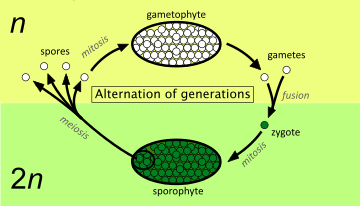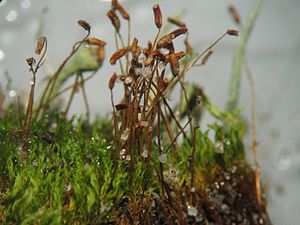What is alternation of generations?
1 Answer
Alternation of generation is defined as the alternation of multicellular diploid and haploid forms in the organism's life cycle.
Explanation:
It describes an alternation in forms which occur in plants and some Protists. One form is the diploid sporophyte with 2n chromosomes. The other form is the haploid gametophyte with n chromosomes. Both forms are multicellular.
The mature sporophyte produces spores by meiosis which reduces the number of chromosomes from 2n to n. The haploid spores germinate and grow into a gametophyte which produces gametes by mitosis. Two gametes fuse to form a zygote, which develops into a sporophyte.
The classic example is the mosses, where the green plant is a haploid gametophyte and the reproductive phase is the brown diploid sporophyte. The two forms occur together.
In bryophytes and mosses, the gametophyte is the dominant generation and the sporophyte are sporangium bearing stalks growing from the gametophyte.
In ferns, the sporophyte is much larger, but the gametophyte is also a little plant that can grow for a long period of time.
In angiosperms, the sporophyte generation is almost the whole life cycle, except the small reproductive structures.

 )
)  )
) 